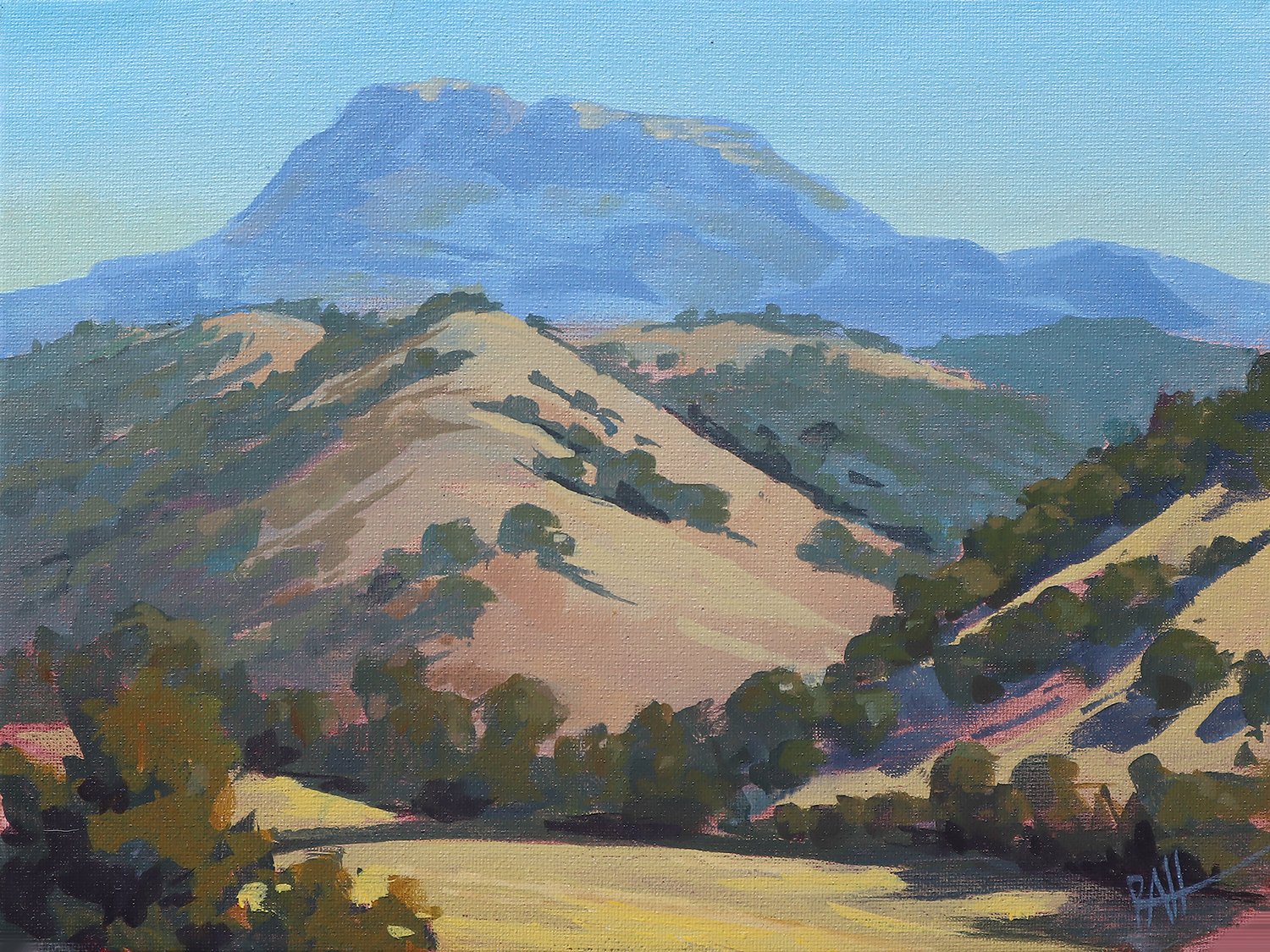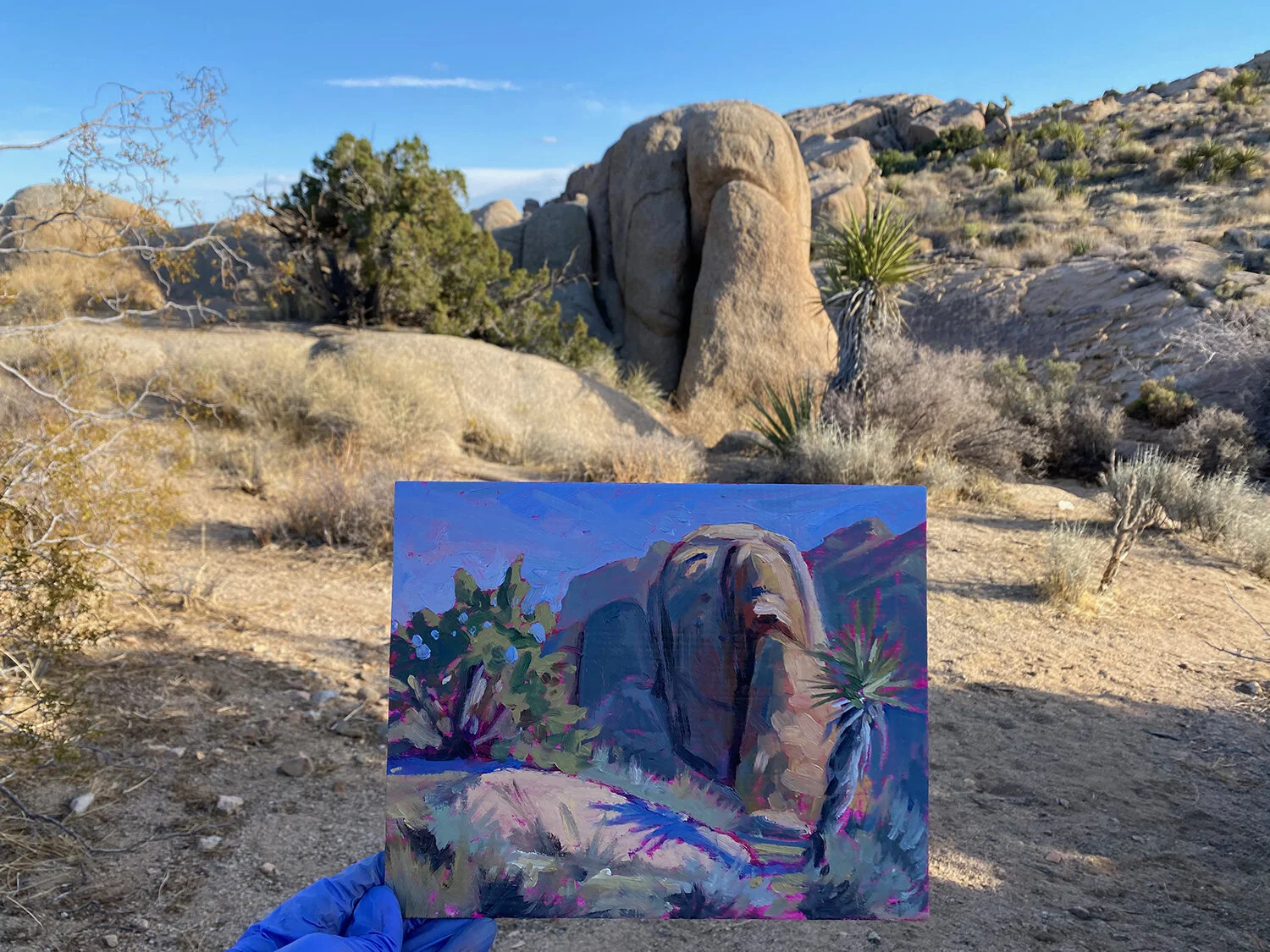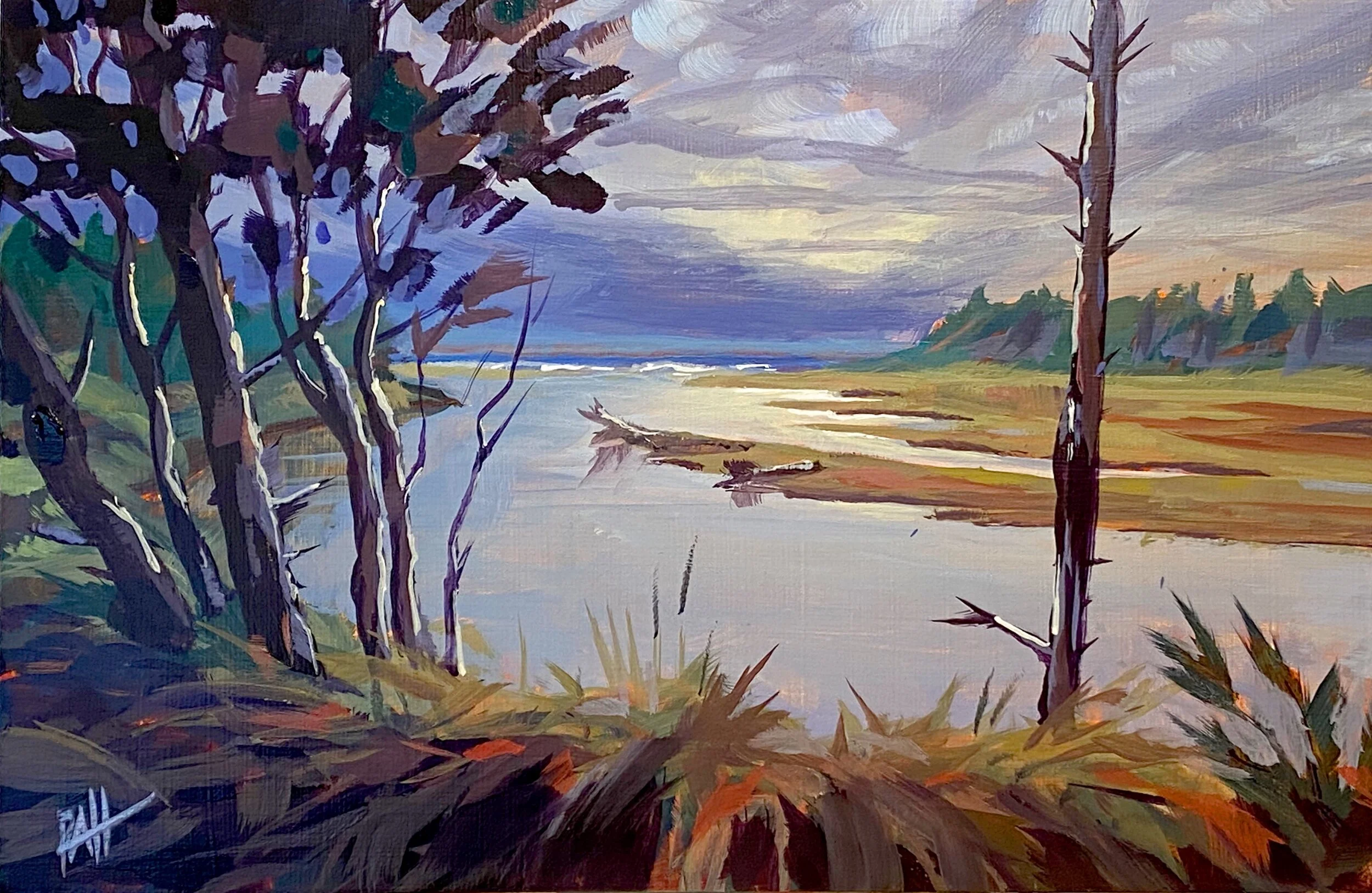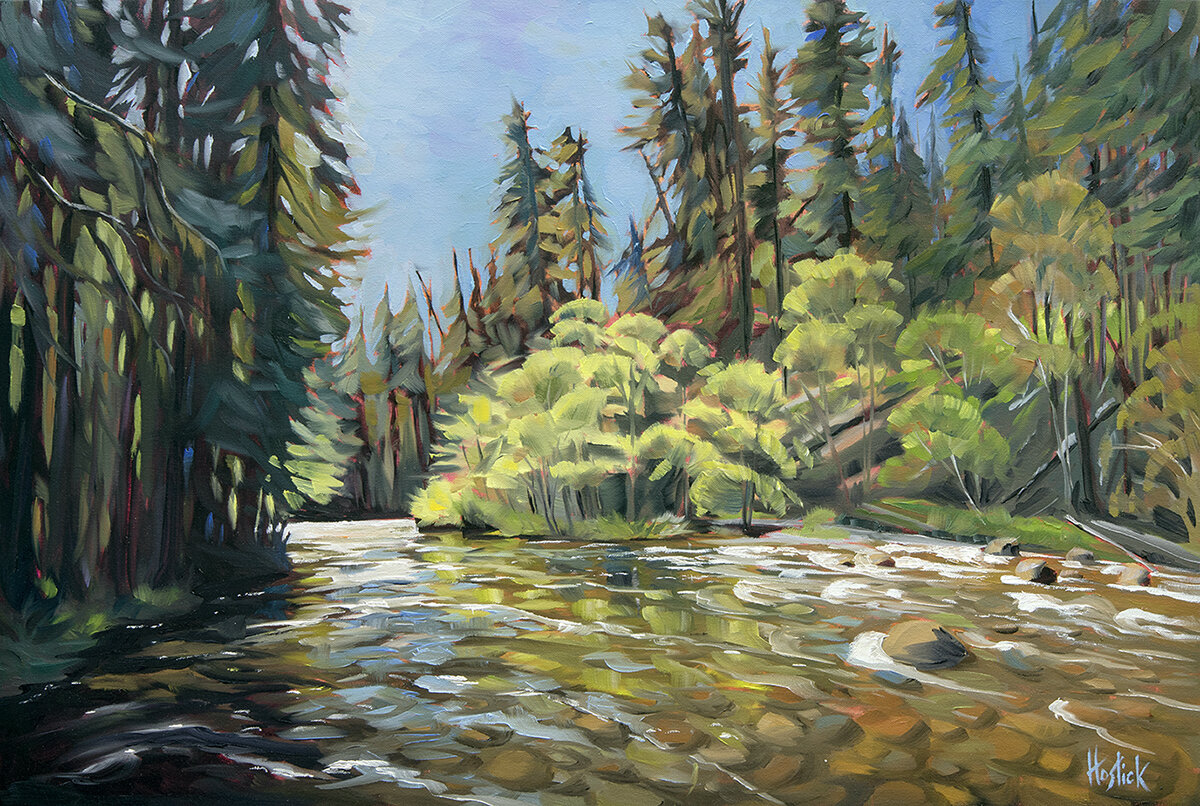Here’s a little conundrum that artists seem to experience: how do you evaluate your own artwork?
I get the feeling it’s a conundrum for almost any activity you care about. The question is usually followed by a deeper one: what are your personal measures for excellence? And what should you do when you’re falling short?
Without realizing it, I recently found myself struggling with this. In the process I learned a few things, including a great paradox of problems: they’re pretty good teachers.
I converted one of our rooms into my art studio last year but left the walls the same beautiful, sunny yellow. I liked the warm color. But as I considered making a few upgrades to my studio a couple weeks ago, I had an unexpected realization.
Over the past year, I’d found myself working extra hard on certain color schemes. Could the intense color of reflected light in my studio be throwing me off? I decided to repaint with a neutral gray color, since even white walls tend to reflect other colors, e.g. floor, objects outside, etc.
I headed to the paint shop. After spending half an hour comparing gray tones, I bought a color I thought would be the most neutral, i.e. a true middle gray, not reddish, greenish, bluish etc. I figured I knew enough about color to get it right.
I dismantled my whole studio and began painting the room with confidence. But halfway through, I had a sinking feeling. The color was looking a lot like baby blue, not neutral gray. I kept at it. It was night, and I thought maybe the color would look better once the paint dried, or maybe in daylight it would be ok.
Daylight brought a frosty glow to the newly painted walls. It looked, interestingly, just like the overcast day outside: a bright blue-gray. It’s an awesome color, but it wasn’t working. Something was off.
I decided to mix my own paint samples and slap them straight on the walls to compare. As I mixed the paints to look pleasing and balanced in the room, I added not only black and white, but magenta and blue, with burnt umber and a cream-colored base (with a smidge of red and yellow). I finally found a color I liked that felt more neutral in the room.
Outside square is the wall color in daylight; inside square is the same color under halogen light
It happened to be nighttime again as I was messing with paint colors. Another question hit me: how were my halogen studio lights influencing the appearance of color? Halogen bulbs deliver a fairly clean light but it’s much warmer than daylight.
I’ve worked with these lights for years, knowing they’re not a substitute for daylight (again, I like the warmth; daylight feels cold to me at night). This time, however, I started wondering if there was a way to objectively measure just how much these lights were affecting the color of paint on the walls, and more importantly, on my artwork.
I’ve used my iPad to finesse color before, like a giant color swatch. I decided to try it in the studio. I worked with an app called Procreate to digitally (with subtle adjustments of the color mixer) match the apparent color of a sample patch of gray wall. On the wall, with the halogen lights on, the apparent color was gray. But in daylight, the digitally matched color looked like Heinz57 Sauce, or a rich burnt sienna. Not a hit of gray.
Color-balancing light setup
It was obvious that painting the walls wouldn’t fix the problem unless I also changed up the lights. I added two sets of double fluorescent tubes in both daylight and warm-white color temperature (5000k and 3500k) to join my two 300-watt halogen spotlights. I can selectively turn on any combination of these to achieve a different light temperature.
But I was still stuck on the gray problem. I kept second-guessing, even after I’d chosen a custom-mixed color that looked correct on the actual wall. I decided I needed to just trust myself. I’d made a mistake the first time because I didn’t do my homework. Now I knew better.
Once the new color started going on, I thought it was looking rather purple. Then I worried it was too dark. But when it was all done, I finally felt harmony.
About a day later, I realized I’d selected a light gray compliment to the dark-honey colored oak floors and desktops. It wasn’t that the walls needed to be perfectly neutral gray, they also needed to balance the color equation with another strong color in the room.
At this point you might be wondering, what does all this have to do with self-evaluation?
For artists, this kind of problem is part of the work we do every day: it’s the same problem we face when evaluating our own artwork. We can only view our work in the light of our own experience.
Feelings are a good clue for problem solving but aren’t very reliable and don’t translate well to consistent solutions. As we learn, we begin to understand what drives our feelings, for instance what really makes a piece of artwork look good or not, or what makes a color look neutral gray, baby blue, or like Heinz57 sauce.
With knowledge, we can take steps to set up a better outcome and get consistently better results. Soon, these steps become second nature. And voila, your work improves.
I know that might seem obvious. Maybe the real key is engaging with the problems rather than ignoring or avoiding them. If the color on the wall doesn’t feel right, you may never know why unless you try to find out. The difference between an artwork feeling right or wrong is something that can often be discovered and learned.
Of course, art is completely subjective. Everyone’s senses and sensibilities are different. But within a sensory space like visual art or music most humans share a common set of aesthetic principles. Not to say that art must adhere to these by any means, but mostly it does.
As an artist, I might venture to say the systematic discovery of your personal sensibilities is a good path to developing your unique style.
A more pragmatic trick for evaluating your own artwork is to view it through a mirror. Ever look at your face in a double mirror and wonder, to whom does that distorted but familiar visage belong? Same thing. Viewed this way, your own painting looks unfamiliar – almost like someone else’s work.
This is helps you see with fresh eyes, which lends objectivity. But again, it only works if you’re looking with a critical eye. As you learn where to look for clues as to why something doesn’t feel quite right, such as value, color harmony, composition, shapes, and so on, you’ll find more to pay attention to while you work. Each clue becomes part of your personal standard for excellence.
It’s not easy. Having a great teacher is a big help, should you be so lucky. But no matter what you’re doing, inviting criticism, even from yourself, is most definitely not a natural urge for most people. It takes practice, too.
That said, the growth that comes from this practice is faster and more enjoyable than being cast adrift with your undefined expectations, hoping for the best. Who knows? You might even discover life philosophy in a bucket of gray paint.
Next week, I have a couple of little announcements to make.






























